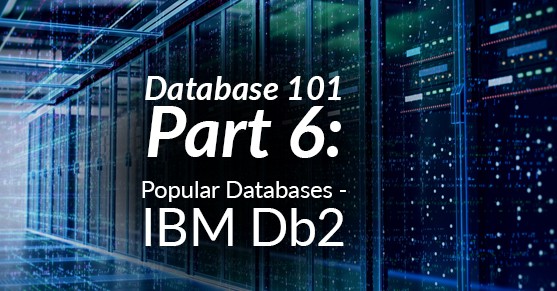IBM’s Db2 (previously DB2 up until 2017) is a popular Relational Database Management System used by businesses of all sizes in the computer software and IT service industries. Originally developed for the relational model, IBM has extended Db2’s support to object-relational and non-relational structures over the last 10 years.
Db2 is available in two main “flavors,” so to speak — mainframe (z-Series [z/OS] and i-series [AS/400]) and midrange (LUW) — and has several NoSQL functions like graph store, Extensible Markup Language (XML), JavaScript Object Notation (JSON), and more. In relation to other RDBMS, Db2 has significant system performance enhancers like increased query and CPU processing. It also offers unparalleled scalability, allowing you to use a free version for small servers and seamlessly upgrade that free version to handle the world’s largest data volumes or transactional volumes. Db2 excels in cloud environments as well, with an ease of licensing that has it leading the pack. On top of other things, users consider Db2 one of the industry’s leaders when it comes to quality of optimizer and speed of data access.
With the most recent version of Db2, IBM focused their efforts toward improving features added in Version 10.5 like BLU acceleration for analytical workloads, High Availability Disaster Recovery (HADR) in pureScale, and other performance and availability enhancers. Version 11.1 can process large data loads with impressive analytical capabilities and stability; not only is data utilization mastered with Db2, it’s done quickly and safely. Accompanying its numerous practical advantages, IBM also offers peak support for Db2 users with easier administration and maintenance.
When it comes to cloud, Db2 has an interesting competitive advantage over other databases. For instance, unlike Oracle, Db2 is easy to run on any cloud. The Direct editions are licensed by Virtual CPU, which means you can move VMs running Db2 anywhere you like without worrying about licensing the hosts. Databases like Oracle require that you have each physical CPU licensed, requiring those in public and private clouds to use only focused hosts with the proper licensing.
There are a number of reasons businesses use Db2 as their primary database system and the list of advanced components goes on and on. No matter what that reason may be for your organization, the XTIVIA team can help you with all of your licensing and database administration needs.
- Editions (presented alphabetically, list subject to change at IBM’s whim):
- Db2 Advanced Enterprise Server Edition
- Db2 Advanced Workgroup Server Edition
- Db2 Developer Edition (available for free on small servers)
- Db2 Direct Advanced Edition
- Db2 Direct Standard Edition
- Db2 Enterprise Server Edition
- Db2 Workgroup Server Edition
- High Availability:
- Db2 High Availability Feature/Db2 High Availability Disaster Recovery (HADR)
- Db2 PureScale
- Replication:
- Q-Replication
- SQL-Replication
- CDC Replication
- Operating System:
- z/OS, Linux, Unix, and Microsoft Windows
- Cloud:
- There are three options for cloud services (IBM Bluemix):
- Db2 on Cloud
- Db2 Warehouse on Cloud
- Db2 Hosted
- Db2 is available on any cloud using Bring Your Own License (BYOL)
- There are three options for cloud services (IBM Bluemix):
- History:
- Previously known as SQL/DS, Db2 (originally “DB2”) was first introduced to the market by IBM in 1983 as a Database Management System (DBMS) on multiple version storage (MVS) platform. Initially, Db2 was only available for operation through IBM mainframes, but throughout the ’90s it was launched on new platforms like OS/2, Unix, Microsoft Windows, and finally, Linux. As it landed on new platforms, Db2 was reworked and relaunched to fit database progress of the time. Additionally, acquisitions by IBM — such as the purchasing of the Informix Corporation in 2001 — over the years have also lead to advancing the abilities of Db2. As of 2017, there are nearly 6,500 companies in the U.S. using one of the multiple versions of Db2.

